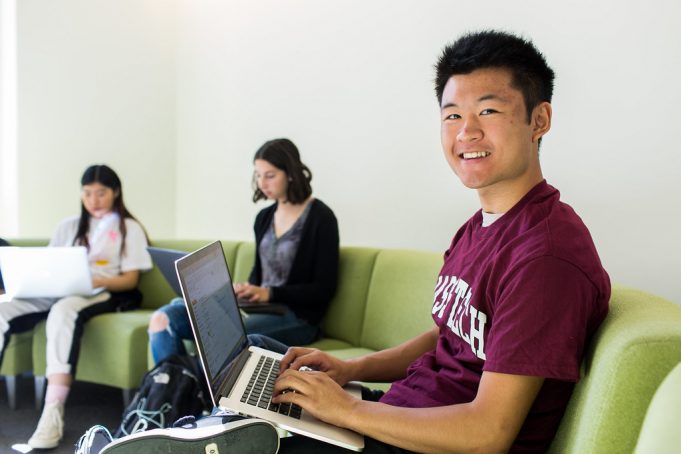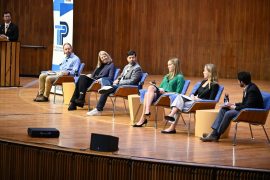Integrating computing across disciplines

The Common Ground for Computing Education is providing a mechanism for students to pursue valuable computational knowledge within the context of their fields of interest.
Class enrollments in the MIT Department of Electrical Engineering and Computer Science (EECS) are approaching an all-time high. But not all enrollees are EECS majors. Students studying everything from aeronautics to urban planning know that in today’s world, programming skills and harnessing the power of machine learning have become fundamental to success in almost any field.
The Common Ground for Computing Education, created through the MIT Stephen A. Schwarzman College of Computing, provides a mechanism for students to pursue that valuable computational knowledge within the context of their fields of interest. Launched in 2019, the cross-cutting college facilitates the melding of computing with MIT’s five schools; Common Ground supports the academic portion of that mission by facilitating collaborations among multiple departments to develop classes and curricula that blend computing with other disciplines.
“Common Ground reaches all parts of the Institute, enabling students to frame disciplinary problems using a rich computational framework,” says Asu Ozdaglar SM ’98, PhD ’03, the college’s deputy dean of academics, EECS department head, and the MathWorks Professor of Electrical Engineering and Computer Science. “The main objective is to educate computing bilinguals, students who are fluent in both computing methodology and the fundamentals of their disciplines—a core component of the college’s mission.”
Common Ground was formally announced as a new area within the college in January 2020. By the next school year, students could choose among three pilot offerings: Linear Algebra and Optimization in the fall with the Department of Mathematics and EECS; Modeling with Machine Learning: From Algorithms to Applications in the spring, with disciplinary modules developed by multiple engineering departments and MIT Supply Chain Management; and Introduction to Computational Science and Engineering during both semesters, a collaboration of the Department of Aeronautics and Astronautics and the Department of Mathematics.
“Common Ground reaches all parts of the Institute, enabling students to frame disciplinary problems using a rich computational framework,” Ozdaglar says.
Common Ground offerings will expand in the years to come, Ozdaglar says, adding that the program welcomes ideas for classes. Proposals undergo rigorous review in the Common Ground Standing Committee, a group of 29 faculty from across MIT dedicated to assessing and addressing areas where a multidisciplinary approach would benefit students. “Some ideas currently in the works include classes on causal inference, creative programming, and data visualization with communication,” she says.
“MIT has a vibrant community in interdisciplinary research,” says Jennifer Donath, program manager for the Common Ground. “These classes are designed to make those same cross-cutting connections, giving students great opportunities to do unique things.”
This article originally appeared in the Fall 2021 issue of MIT Spectrum magazine.


